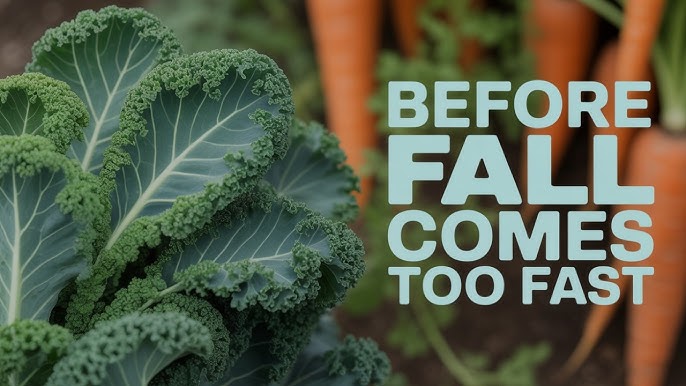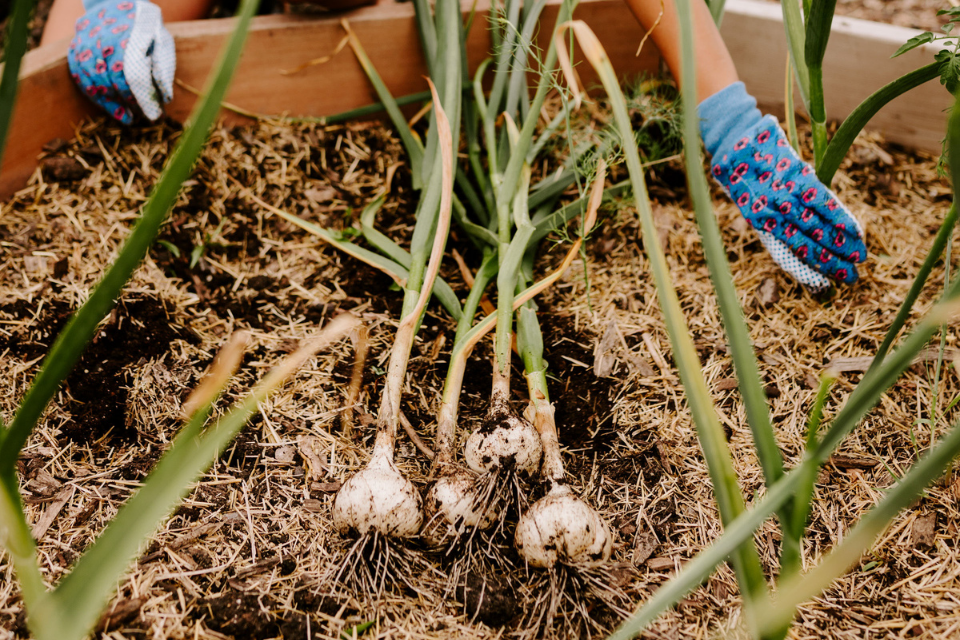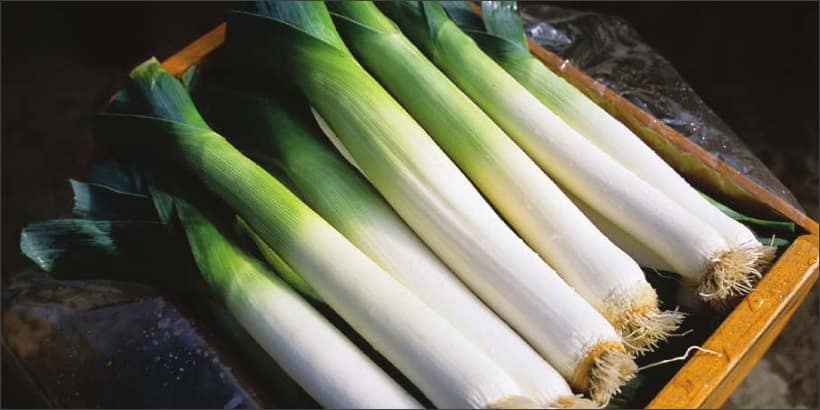Discover the 5 easiest vegetables to plant in fall and harvest all winter long in Canada. Expert tips from DH Garden Centre Vancouver to grow garlic, leeks, carrots, onions, and collardswithout the fuss.
Introduction: The Lazy Gardener’s Dream
Hi friends, Darrell here – owner of DH Garden Centre in Vancouver and a landscaper who’s been getting my hands dirty for over 25 years.
I want to tell you a story.
One chilly October morning, years ago, I was in a client’s backyard staring at raised beds that looked barren. The family told me, “We’ll just wait until spring to plant again.” I smiled, because I knew what they didn’t: their garden didn’t need to sleep all winter. With the right crops, their beds could be quietly producing fresh, sweet, nutrient-packed food—all while they stayed cozy inside.
And that’s the beauty of fall gardening. Some vegetables actually thrive in cold weather. They become sweeter, richer, and almost maintenance-free. You plant them in fall, walk away, and by winter or early spring, you’ve got a harvest waiting for you.
Today, I’m sharing my top 5 vegetables you can plant in fall and forget about all winter. These crops aren’t just easy—they’re practically bulletproof in Canadian gardens.

Today, I’m sharing my top 5 vegetables you can plant in fall and forget about all winter. These crops aren’t just easy they’re practically bulletproof in Canadian gardens.
1. Garlic – The King of Winter Crops
If there’s one crop I recommend to every gardener – beginner or seasoned – it’s garlic. At DH Garden Centre, garlic is always a customer favourite because it’s simple, reliable, and practically takes care of itself once planted.
Why Garlic Works in Canada
Garlic is a cool-weather crop that thrives in Canadian conditions. Unlike many vegetables that struggle in frost, garlic actually needs cold weather to develop into full bulbs.
This process is called vernalization—where garlic cloves accumulate “chill hours” (temperatures below 4°C / 40°F). These cold hours signal the plant to divide into separate cloves and form a proper bulb.
-
In Vancouver (Zone 7–8): Garlic is planted in late October, once nights are cool but before the ground freezes. Planting too early risks premature sprouting.
-
In colder provinces (Alberta, Manitoba, Ontario, Quebec): Garlic is tucked safely under mulch, where it rests all winter long until spring warmth triggers green shoots.
Think of it as burying treasure—you won’t see much above ground in winter, but beneath the soil, magic is happening.
Darrell’s Proven Planting Tips
Over 25 years of planting garlic, here’s the advice I give every customer:
-
Choose a sunny, well-drained spot – Garlic hates sitting in soggy soil. Raised beds are ideal.
-
Plant cloves pointy side up – At least 2 inches deep in mild zones, 3–4 inches in colder regions.
-
Spacing matters – Give each clove 4–6 inches to ensure plump bulbs at harvest.
-
Mulch generously – Cover with 2–3 inches of straw, shredded leaves, or compost. This:
-
Protects cloves from freezing and thawing cycles
-
Prevents weeds from taking over
-
Keeps soil moisture balanced
-
👉 Darrell’s Tip: “Don’t skimp on mulch. It’s the difference between tiny cloves and big, beautiful bulbs come summer.”

In Vancouver (Zone 7–8): Garlic is planted in late October, once nights are cool but before the ground freezes. Planting too early risks premature sprouting.
Best Garlic Varieties for Canadian Gardens
Not all garlic is the same. Choosing the right type for your zone is crucial:
-
Hardneck Garlic
-
Best for colder zones (3–7)
-
Needs more chill hours
-
Produces a delicious flower stalk (scape) in late spring
-
Examples: Rocambole, Purple Stripe
-
-
Softneck Garlic
-
Ideal for milder winters (Zones 5–10)
-
Stores longer—sometimes up to 12 months
-
More cloves per bulb
-
Examples: Silverskin, Artichoke types
-
At DH Garden Centre, we recommend hardneck varieties for most Canadian gardeners. They’re tough, flavorful, and handle deep cold beautifully.

At DH Garden Centre, we recommend hardneck varieties for most Canadian gardeners. They’re tough, flavorful, and handle deep cold beautifully.
Harvest and Storage
The best part? Garlic rewards your patience with a summer harvest that can last you through the year.
-
Harvest when lower leaves start to yellow (usually mid-to-late July in Vancouver).
-
Cure bulbs in a dry, shaded place for 2–3 weeks.
-
Store in a cool, dry area—softneck lasts up to a year, hardneck about 6 months.
Plant once, forget about it, and by summer, you’ll be pulling up plump, fragrant bulbs that store easily and elevate every meal.
2. Leeks – The Winter Warriors
Leeks are like the unsung heroes of winter gardens. They don’t form bulbs like onions but grow thick, sweet stalks that taste amazing in soups and stews.
Why Leeks Love Cold
Leeks are naturally cold hardy, some varieties withstanding even sub-zero Canadian winters under snow cover.
When mature, they behave like vegetables stored in a natural fridge outdoors. I’ve harvested leeks in January when the ground was frosty, and they pulled up perfectly fresh.
Darrell’s Tip:
Start leeks in late summer in trays, then transplant in early fall. That timing ensures they’re mature before the hard freezes set in. Once mature, they’ll overwinter beautifully.
Recommended Varieties for Canada:
-
King Richard – heat and cold tolerant (great for Vancouver, Zones 7–8)
-
Bandit or Blue Solaise – extremely cold hardy (great for Zones 3–6)
Leeks are a “set and forget” crop: no fuss, no bolting, just steady greens.

Start leeks in late summer in trays, then transplant in early fall. That timing ensures they’re mature before the hard freezes set in. Once mature, they’ll overwinter beautifully.
3. Bunching Onions – Fresh Greens All Winter
Call them green onions, scallions, or spring onions—these are some of the most versatile crops to grow.
Why Bunching Onions Are Perfect for Winter
Unlike storage onions, bunching onions don’t need long hot days to form bulbs. They thrive in cool weather and tolerate snow like champs.
I often grow the Evergreen Hardy White variety, which shrugs off frosts down to -10°C (14°F). In Vancouver, they stay evergreen all winter. In colder provinces, cover them with a light frost cloth, and you’ll have fresh onion tops ready for soups, omelets, and salads.
Darrell’s Tip:
Harvest bunching onions like “cut and come again” crops. Snip the tops with scissors, and they’ll regrow for weeks.
Best Varieties for Canadian Winters:
-
Evergreen Hardy White (super cold hardy)
-
Ishikura Long Winter

In Vancouver, they stay evergreen all winter. In colder provinces, cover them with a light frost cloth, and you’ll have fresh onion tops ready for soups, omelets, and salads.
4. Carrots – Sweetest in the Snow
Carrots are magic in winter. The colder it gets, the sweeter they taste. That’s because low temperatures turn their starch into sugar—a natural antifreeze!
Why Carrots Overwinter Well
Carrots tolerate frost down to -12°C (10°F) and their roots stay safe underground even when tops die back. In fact, I’ve harvested carrots after a snowfall, brushing away frost to find perfectly sweet roots.
Darrell’s Tip:
Time your planting carefully. Sow carrots in late summer so they mature by mid-fall. Once mature, they’ll “pause” in cold weather, storing themselves in the soil like a fridge.
Varieties for Canadian Climates:
-
Nantes – sweet, reliable
-
Bolero – cold hardy, long storage life
-
Chantenay Red Core – handles tough soils and cold
In my own garden, nothing beats pulling a winter carrot and eating it right there in the frosty air. It tastes like candy.

In my own garden, nothing beats pulling a winter carrot and eating it right there in the frosty air. It tastes like candy.
5. Collard Greens – The Toughest Leafy Green
If you want greens in the dead of winter, go for collards. They’re even tougher than kale.
Why Collards Belong in Your Fall Garden
Collards can handle temperatures down to -7°C (20°F), sometimes colder with a little protection. In Vancouver, I grow them uncovered all winter. In colder zones, a simple frost blanket or small hoop house works wonders.
Darrell’s Tip:
Treat collards like a “cut and come again” crop. Pick outer leaves, and the plant keeps producing. With a little fertilizer, collards can last until spring before they bolt.
Recommended Varieties:
-
Champion – cold hardy, vigorous
-
Georgia Southern – a classic with big tender leaves
I’ll never forget making collard stew in January from my own garden harvest. The flavour was rich, earthy, and warming—pure comfort food.
FAQs About Fall Vegetables in Canada
Q: When is the best time to plant fall vegetables in Canada?
A: Late August through October, depending on your climate. In Vancouver (Zone 7–8), plant garlic and onions in October. In colder zones, aim for late August to early September.
Q: Do I need to cover these vegetables in winter?
A: Garlic, carrots, and leeks usually don’t need covers. Collards and bunching onions benefit from row covers in very cold zones (-20°C or colder).
Q: Can I grow these in raised beds or containers?
A: Absolutely! Raised beds are perfect for overwinter crops because soil drains better. Containers work too, but insulate them with straw bales or bubble wrap in cold zones.
Q: What if my soil freezes solid?
A: Mulch heavily and choose hardy varieties. For extreme climates, harvest before deep freeze and store in sand or sawdust in a cool garage.
Final Thoughts: Plant Now, Feast Later
Gardening doesn’t stop when the air turns crisp. In fact, some of the easiest crops—garlic, leeks, bunching onions, carrots, and collards—need cold weather to shine.
Here in Vancouver, I’ve seen gardens transformed in winter just by adding these hardy veggies. They’re low-maintenance, forgiving, and reward you with fresh food when you least expect it.
So don’t let your garden beds sit empty. Plant now, mulch well, and let nature do the work. Come January, you’ll thank yourself when you step outside to harvest sweet carrots or fresh collards for dinner.
Call to Action
At DH Garden Centre (3742 West 10th Avenue, Vancouver), we carry a wide selection of garlic seed, cold-hardy onion varieties, carrot seeds, and organic fertilizers—everything you need to get started with your winter garden.
👉 Visit us in-store or shop online at dhgardencentre.com. Let’s make your garden productive all year long.


